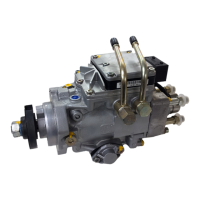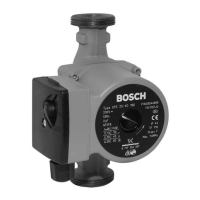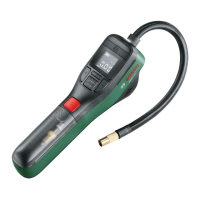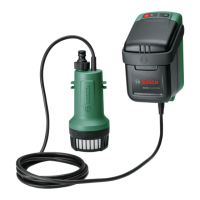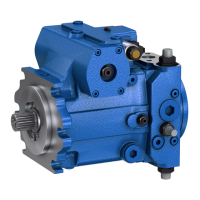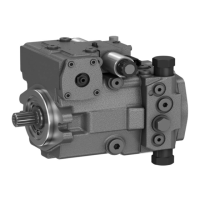COMMISSIONING
6 720 643 603 (2011/11)
16
6.2.3 REPLACING WATER WITH HEAT TRANSFER
FLUID
To add the heat transfer fluid, you can use electric
pumps, hand pumps or power drill attachments capable
of generating pressures of at least 2 bar.
B Using a pump, fill the solar heating system with fluid
via one of the fill and drain valves (1) in the solar
heating station.
Fig. 17 Filling via fill & drain valve
1 Fill & drain valves
B Set the ball valves (Æ Fig. 16, (1)) on the
thermometers to 45° and open the flow limiter
(Æ Fig. 16, (2)) and other shut-off fittings.
B Fill the solar heating system slowly so that air bubbles
do not form.
B Lastly, set the ball valves on the thermometers so that
the gravity brakes are ready for operation (0°
position).
6.2.4 VERIFYING THAT THE SOLAR HEATING
SYSTEM IS FREE OF AIR
B Switch the solar pump(s) on and off manually.
B While switching the pump on and off, observe the
black pointer on the pressure gauge (1) on the safety
assembly.
Fig. 18 Checking the pressure gauge display
1 Pressure gauge
6.2.5 DETERMINING THE OPERATING PRESSURE
When putting the system into operation, the operating
pressure must be 0.8 bar above the static pressure
(1 metre difference in height equals 0.1 bar).
The operating pressure must be at least 1.8 bar (when
cold, 20 °C).
Example: 10 m static height equals 1.0 bar plus 0.8 bar
= 1.8 bar operating pressure.
B If there is not enough pressure, pump in more heat
transfer fluid.
B Once the venting procedure is complete, close the
ball valve on the air vent.
When heat transfer fluid vaporises in the collectors,
pressure compensation can only be carried out by the
expansion vessel if the air vent is closed.
The pipes must be completely emptied of
water, otherwise the heat transfer fluid can
become diluted.
7747006489.36-1.SD
1
1
If the black pointer on the pressure gauge
(1) indicates pressure fluctuations when the
solar pump is switched on and off, the solar
heating system still contains air.
7747006489.33-1.SD
1
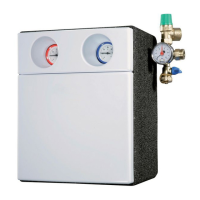
